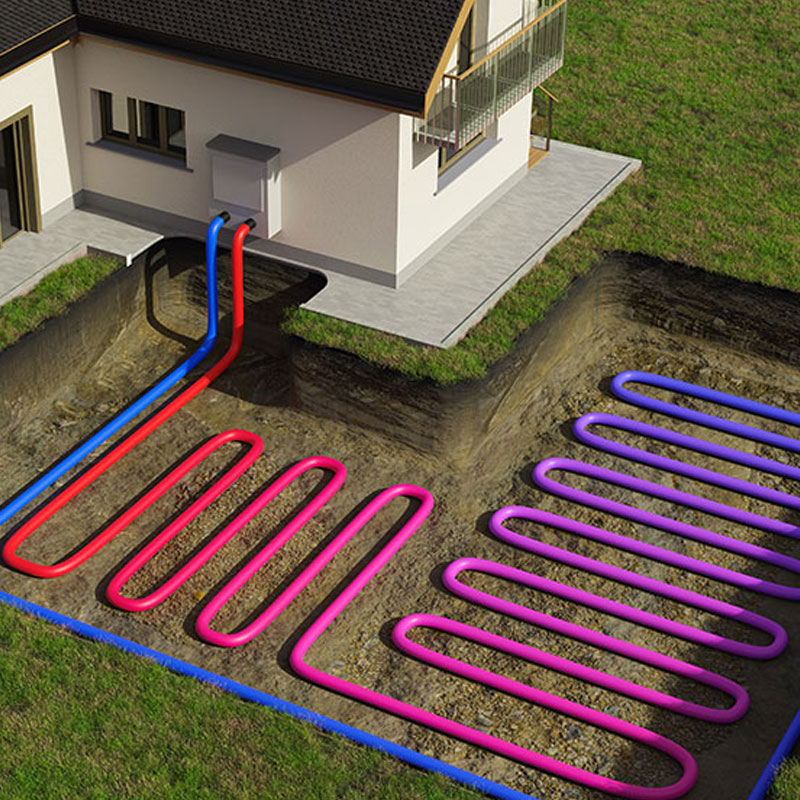Geothermal Heating and GSHPs

02 May, 2024
Chris Barros, P.E., President and CEO, ODIN
Geothermal heating and ground source heat pumps (GSHPs) are related technologies, but there are some differences between them. At the most basic level, geothermal heating uses heat directly from the earth’s core, such as hot springs, geysers and volcanic hot spots. Ground source heat pumps absorb the sun’s energy stored in relatively shallow ground and upgrade this for use in domestic and commercial applications.
Often, you will hear GSHP applications referred to as ‘Geothermal.’ The name means little when you understand both better:
Scope of Application:
- Geothermal heating typically refers to systems that utilize the earth’s natural heat through deep wells or other methods to directly provide heating for buildings. Since the temperature is very high, it can also be used to provide steam to power electricity generators
- Ground source heat pumps (GSHPs), on the other hand, specifically refer to systems that use heat pump technology to extract heat from the ground or a body of water to support the heating and cooling of buildings.
Heat Source:
- Geothermal heating systems typically access heat from deep within the earth’s crust, often through wells drilled hundreds of feet deep. They rely on the natural heat stored in the earth’s core.
- GSHPs extract heat from the shallow ground (typically within a few feet to a few hundred feet deep) or from a nearby body of water, such as a pond or lake. They use the relatively stable temperatures found in the ground or water to heat or cool buildings.
Temperature Differential:
- Geothermal heating systems usually tap into much higher temperatures deeper underground, often several hundred degrees Fahrenheit. This allows for direct heating without the need for a heat pump.
- GSHPs operate within a narrower temperature range, typically between 50°F and 70°F (10°C and 21°C). They rely on the heat pump’s refrigerant cycle to extract and amplify heat from the ground or water to provide heating or cooling.
Complexity and Cost:
- Geothermal heating systems tend to be more complex and expensive to install because they require drilling deep wells and often involve specialized equipment for heat extraction.
- GSHPs are more common and generally more affordable to install because they utilize heat pump technology, which is widely used for heating and cooling applications. However, installation costs can still be significant, especially for horizontal or vertical ground loop systems.
In summary, while both geothermal heating and ground source heat pumps harness the earth’s thermal energy for heating and cooling, they differ in the depth of heat extraction, the method of heat transfer, and the complexity of installation. Geothermal heating systems typically access higher temperatures from deep underground, while GSHPs extract heat from the shallow ground or a nearby body of water using heat pump technology.
One of the more popular ways we at ODIN are seeing GSHP approach be applied is for providing a more consistent temperature level of water to minimize the amount the temperature needs to be raised for heating or lowered for cooling. Our engineering team continues to look at design applications and improvements to assist our LDCs and industrial customers.


